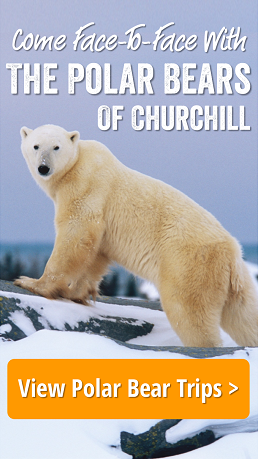by Steve Selden | Dec 24, 2014 | Churchill News
In Churchill, Manitoba fall is polar bear season and winter is aurora season. The rest of the year provides overlapping sights and wildlife encounters but those two seasons are pretty exclusive for those attractions. You can see northern lights in Churchill just about year-round though the most reliable time is the heart of winter. The Hudson Bay is frozen and therefore the moisture level in the air is low influencing cloud cover. Natural Habitat Adventures is gearing up for the aurora season that begins on January 31. This year promises to be the most amazing year so far with a record number of people taking the train or flying to Churchill for a glimpse of the magical lights.
FACT: There needs to be solar flares on the sun or solar wind for the aurora borealis to happen. When particles from the sun enter Earth’s atmosphere and collide violently with gas atoms various colors of “northern lights” appear.
Check out this link for aurora forecasts in the north:
https://gi.alaska.edu/AuroraForecast

Aurora in the northern Churchill sky.

Aurora borealis in Churchill. Colby Brokvist photo.

Aurora in the boreal forest. Brad Josephs photo.
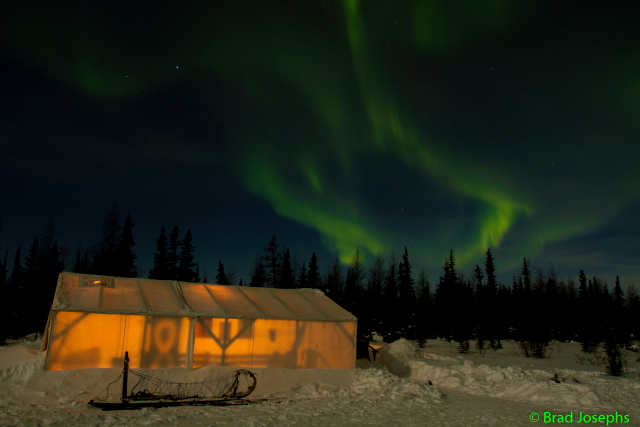
Incredible shot of musher hut with aurora above. Brad Joseph photo.
by Steve Selden | Dec 21, 2014 | Tour News
In the early days of polar bear tourism in Churchill, the Northern Nights hotel played a pivitol role in building the foundation for the tourism in the town. Katie and Brett owned the hotel and partnered with Natural Habitat Adventures to form a bond that fostered an incredible jump start to an ever growing eco-tourism business in the region based mainly on polar bear viewing experiences.

Polar bear romping in the snow near Churchill. Eric Rock photo
The hotel was a combination of buildings connected by a narrow, rustic hallway reminiscent of a train car…just longer. The hallway connected the main part of the hotel with lounge and restaurant. The hallway had the old original rooms that were very cabin-like and cozy. The hotel gave one a sense of home, far, far away from home.
In November 2011 the Northern Nights was lost to fire. The blaze raged in frigid-cold weather toward the end of polar bear season that year. Nobody was injured or lost their life thought the building was completely destroyed. After ownership had transferred a few times between locals and out-of towner’s, the end was somewhat poetic in a sense.
Many memories were forged for all the travelers and guides that stayed in the quirky hotel. The characters that worked as staff, such as uncle Joe and Mukluk are gone and the land remains vacant but the welcome feeling remains in the hearts of many. Bears, Belugas and Beers….the hotels motto is also gone, but lives on in Churchill.
by Steve Selden | Dec 19, 2014 | Conservation
There are many ways to see the natural wonders of Churchill. The diversity of the region and the various modes of transportation, both land and sea based, afford some truly adventurous methods to see it all. From polar bears to beluga whales to all the other supporting animals in this Arctic cast of beautiful creatures, one can come to Churchill with Natural Habitat Adventures and see as much as you can!
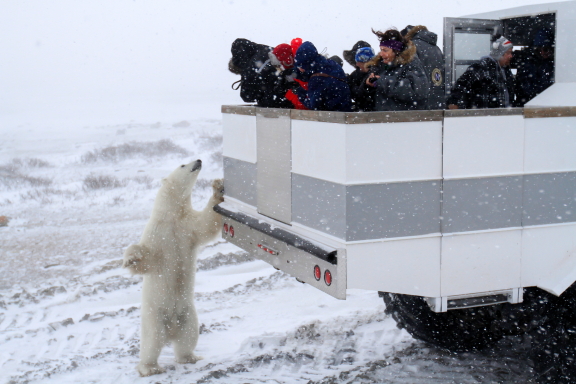
Polar bear taking roll call at a polar rover.
The polar rover is built from the wheels up by our local operator. It’s an amazing vehicle in its own right though when you see polar bears from the back open – air deck you will really see how magical both machine and bear are.
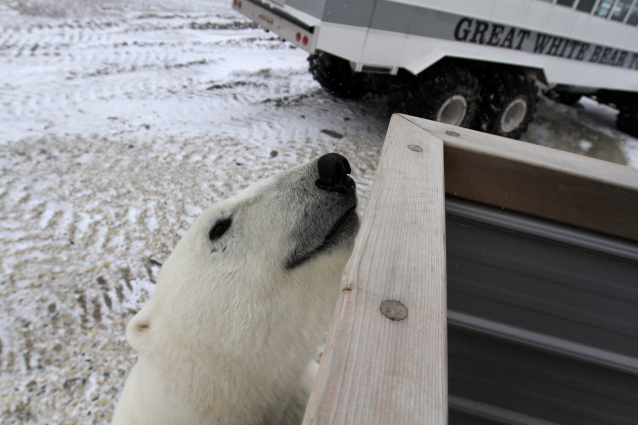
Polar bear looking for a free lunch. Brad Josephs photo.
You can’t get any closer to a polar bear than this in Churchill, Manitoba.

Hudson Bay helicopter lifting off with a cargo of polar bears. Sean Beckett photo.
Hudson Bay Helicopters transports travelers to see the incredible landscape and wildlife below on the tundra and ice. They also play an integral part in wildlife management in the area by transporting bears and biologists to various destinations.
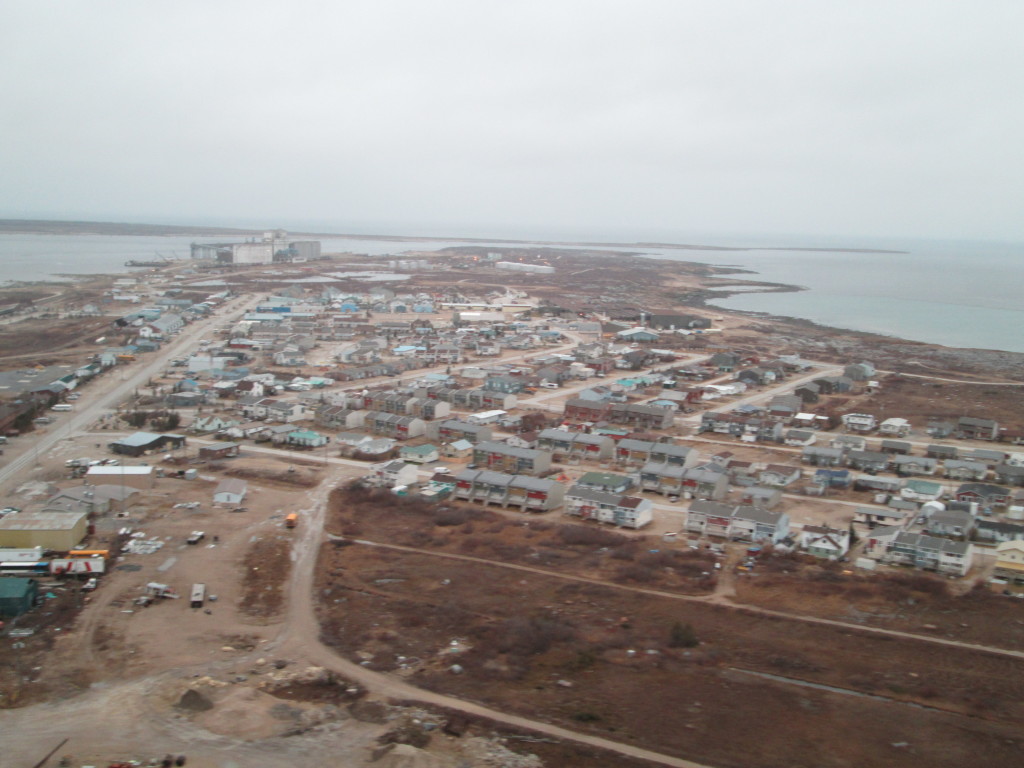
A birds eye view from the helicopter above Churchill. Karen walker photo.
Helicopters offer a perspective of the open space and town of Churchill that is eye opening.
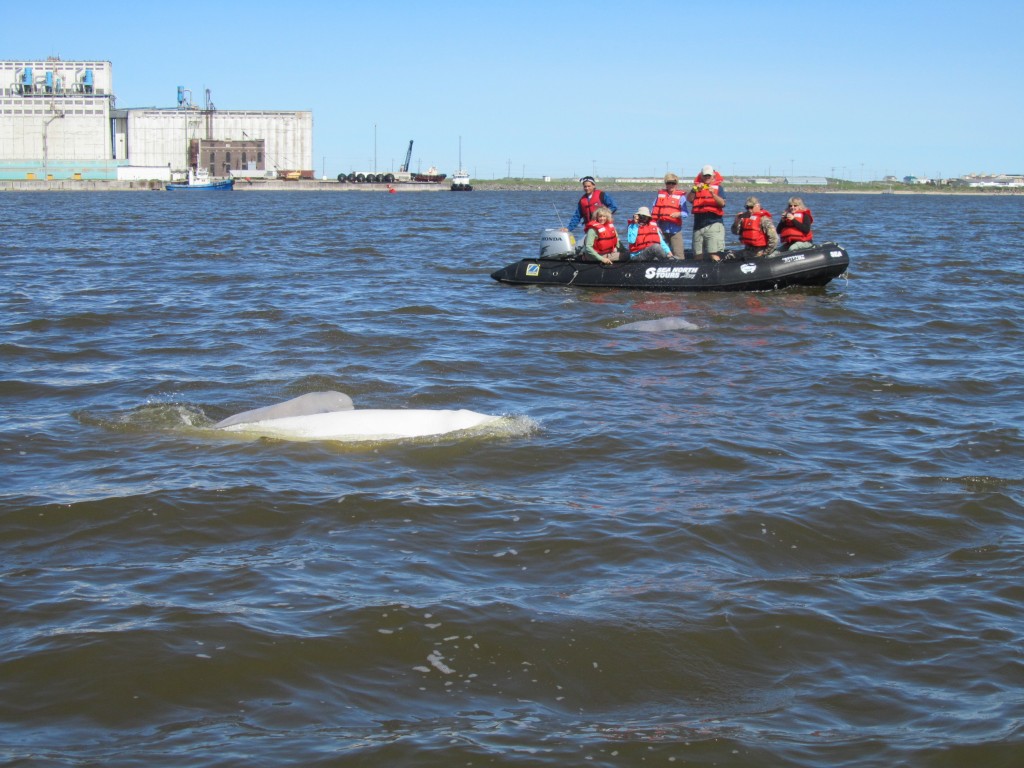
Natural Habitat travelers beluga watching in the Churchill River.
Zodiacs on the Churchill River offer a surface view of beluga whales you cannot get from a bigger vessel where you’re looking down on the whales.

A beluga whale popping out from the Churchill River near the mouth where visibility is amazing. Steve Selden photo.
My favorite photo from my guiding years in Churchill. The thrill of seeing a beluga so close that the spray from his blowhole hits you in the face..
Whatever mode of wildlife adventure you experience you will have memories for a lifetime!
by Steve Selden | Dec 18, 2014 | Churchill News
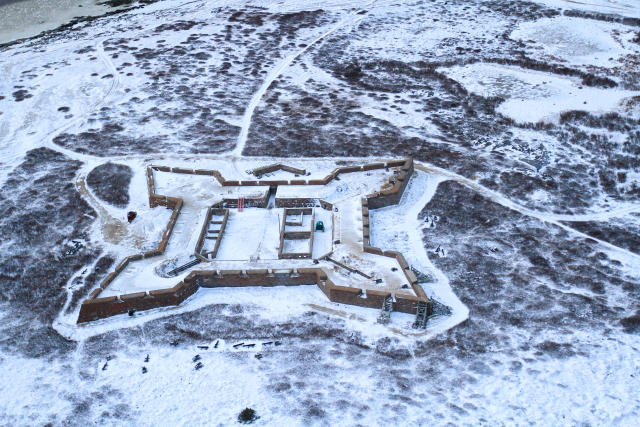
Fort Prince of Wales on the West side of the Churchill River.
If you venture to Churchill in the summertime with Natural Habitat Adventures there’s a good chance you’ll travel cross-river and tour Fort Prince of Wales with a guided interpretation from a Parcs Canada ranger. An intriguing and somewhat comical history endures.
In 1717, just a few years after the Treaty of Utrecht returned all Hudson Bay posts to England, James Knight from the Hudson Bay Company built the ” Churchill River Post” and it was renamed “Prince of Wales” two years later. The initial trading post/fort was constructed to pretty much take advantage geographically of the more northern location and general accessibility to multiple regional fur traders and native trappers.
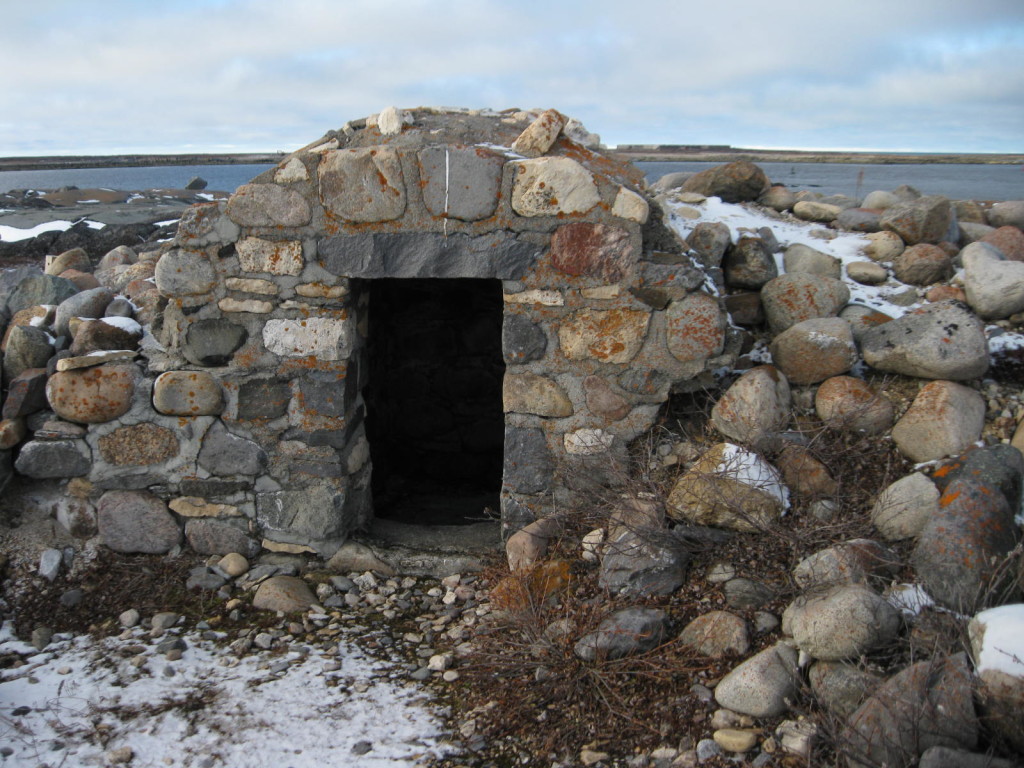
Ammunition cache at Cape Merry for cannon protection of Fort prince of Wales. Karen Walker photo.
With the ongoing feud and battle to control the fur industry between the french and English, the need for a stronghold of greater security seemed like a good idea.
In 1731 construction of the current day Fort Prince of Wales began out on Eskimo Point at the mouth of the Churchill River. A mere 40 years later the four-meter-thick stone walls were completed and the 40 cannon mounts were in place. Nearly unbearable winter living conditions made the construction process less than expeditious. With the sparseness of trees in the area, gathering firewood for heat also was a laborious task. If we could hear the stories from those days.
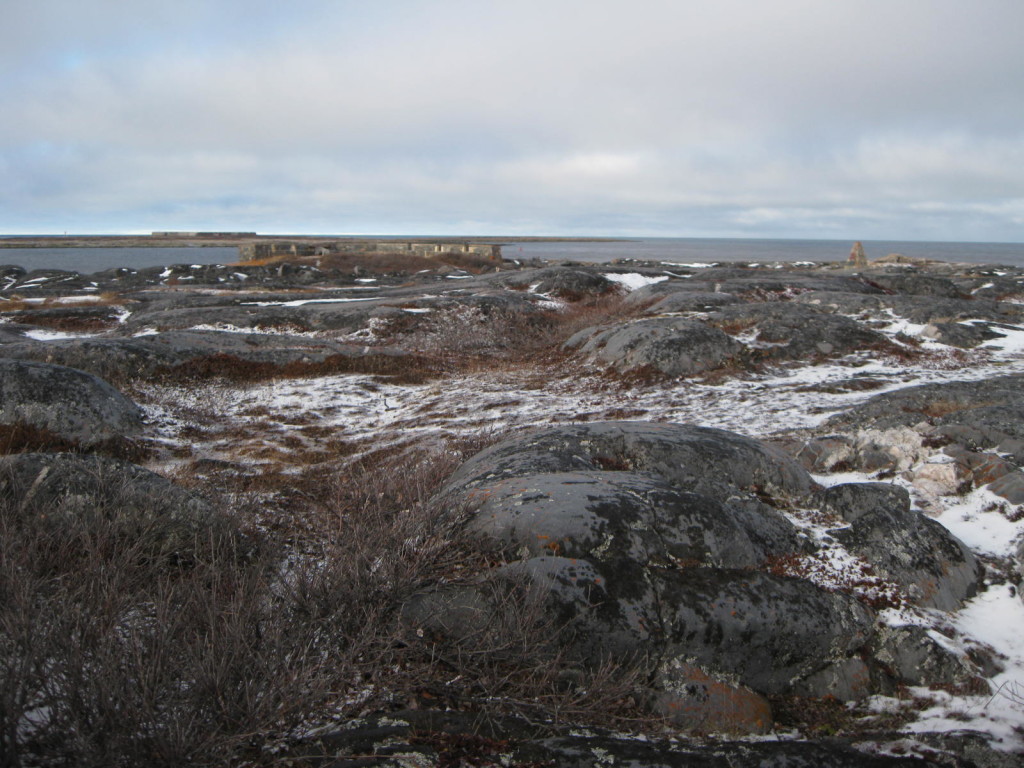
A view across the Cape Merry barrens past the battery and to Fort prince of Wales.
The star fort design, originally conceptualized in the mid-15th century in Italy worked quite well in covering all angles of attack with cannons. Walls were constructed low and thick to withstand cannon fire. A deep ditch surrounding the fort was to compensate for the lower walls.
The grand irony of the entire project culminated in 1782 when three French warships commanded by general La Perouse captured the fort without a single shot being fired. During the whole construction process, the minor details of training the stationed men how to fire a cannon seemed to slip through the cracks. Again, with the severe weather conditions, one can only imagine how basic survival during construction trumped all other endeavors.
In 1934 the process of reconstructing the partially demolished and downtrodden fort began. That process has restored the fort to a most presentable condition. In recent years, an intense archeological effort has produced incredible artifacts used to paint a more vivid picture of life in the 18th century.
by Steve Selden | Dec 16, 2014 | Churchill Photography
Everyone is still buzzing about the polar bear season that came to a close the third week of November. A relatively smooth season overall for Natural Habitat Adventures culminated with the last of the bears being released from the polar bear compound onto the Hudson Bay pack ice. Here are some more photos from a very memorable season.

A sun dog casting its’ rays on an inukshuk. Brad Josephs photo.

Two coy frolick in the willows. Colby Brokvist photo.

Polar bear sniffing around the polar rover. Brad Josephs photo.

Polar bear print in the snow. Karen Walker photo.

Polar bears in sparring mode. Colby Brokvist photo.
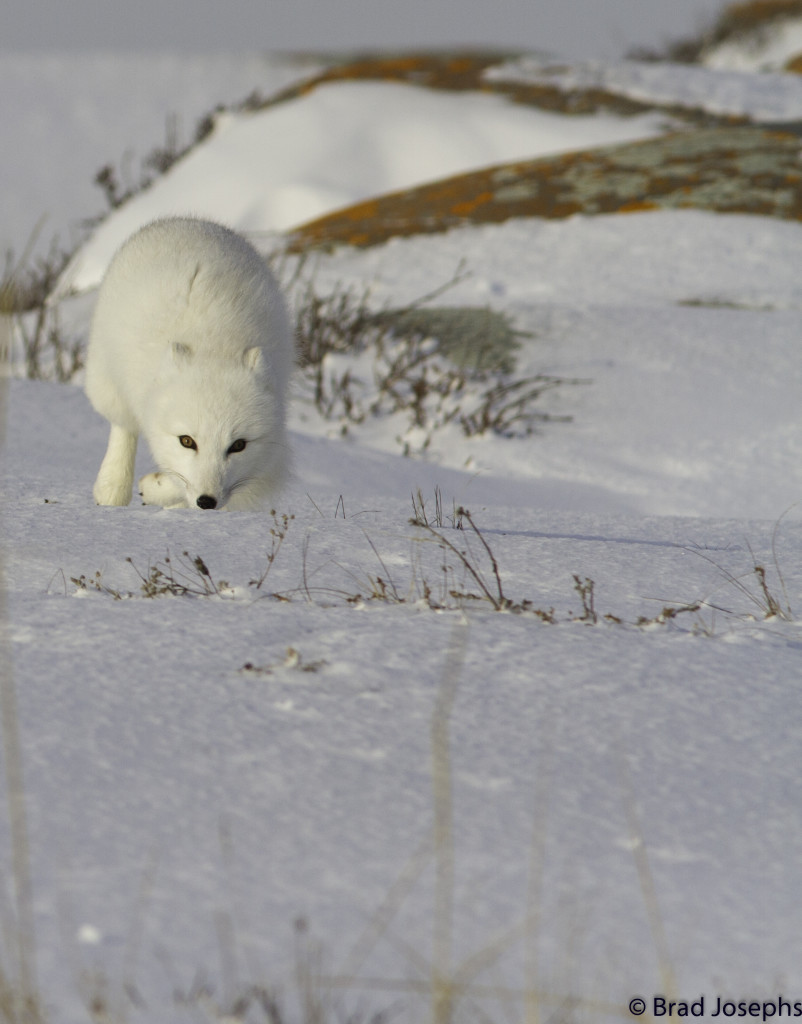
Arctic fox sniffing the tundra for prey. Brad Josephs photo.





















